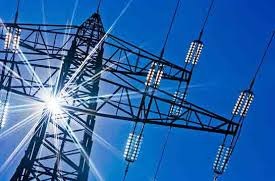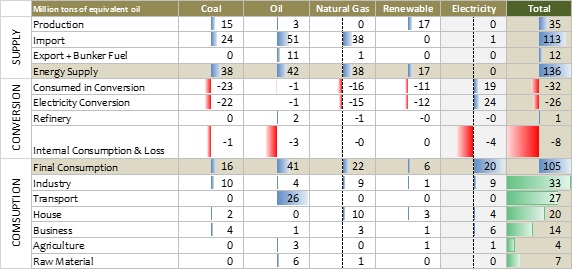 SUMMARY:
SUMMARY:
Can we meet all our energy need from solar and wind? We have long been hearing rhetorics like all energy needs can be met by solar thanks to record breaking decline in solar prices and transition to cleaner world would be faster. In this Q report, firstly, Turkey’s total energy demand will be converted to electricity terms which will be followed by calculating how much solar and wind energy is needed to compensate that amount. Simply because hydrogen production from solar is relatively inefficient, the analysis assumes direct electric heating.
METHOD:
First of all, Balance Table published by the Ministry of Energy and Natural Resources of Turkey is narrowed down by consolidation. A new and consolidated table is created to aggregate detailed data in the balance table. However, 20% of the original transportation demand is used assuming that one fifth of energy used for transportation today will be demanded once cars are electrified(setting aside demand growth). Inefficient internal combustion engines will be replaced by high efficient electric engines. While consolidating the data, agriculture sector and non-energy raw materials are left out from the calculations.
ANALYSIS:
Original Balance Table is very comprehensive. It presents all energy flows based on resources and main subsectors. Instead, it would be more accurate to combine the table and categorize by coal, natural gas and renewables. One point to be careful is, excluding imports and exports, electricity enters into equation after transformation because electricity is obtained from the transformation of primary energy sources.

Final energy demand is presented in the “CONSUMPTION” row of the above table. According to IEA transformations, 1 million tonnes of oil equivalent (mtoe) carries 12 TWh of energy.
In the above table, excluding “agriculture and non-energy”, remaining 26 mtoe for transportation is mainly the energy consumed by internal combustion engines. Considering that these engines are 15-20% efficient, with more efficient engines (electric engines) this number will decrease to one fifth of 26 mtoe. So, when the whole consumption is in terms of electricity, final energy demand will decrease due to efficient engines.

If we want to meet all our energy demand from electricity, we would need electricity production equal to three times of today’s production. Transmission of this power from one part of the country to the other would cause an increase in the power leakages as well. All energy demand in electricity terms is equal to 841 TWh (841 billion kWh) for 2016, this number would be equal to 7% higher, around 900 TWh in 2017.
Well, would it be possible to meet all this energy from solar? For example, if we can forecast 200 TWh of hydro, 15 TWh of geothermal and 100 TWh of wind by 2050, additional 626 TWh remains for solar. This number does not include increase in energy demand.
When no storage is used, based on average 1200 hours of yearly capacity factor, 521,324 MW installed solar capacity is needed. This number is equal to 6 times of current total installed capacity.
Assuming that Turkish electricity generation industry attracts 7-8 billion $ of investments per year and solar plants costs 0.8 million $/MW excluding line costs, additional 417 billion $ of investment is required just for solar. It can be predicted that, investment equal to at least half of this amount will be required for storage. At least 50 years are needed to realize these invesments. Considering the construction of the lines, this number could increase to 60 years (1.2 times).
CONCLUSION:
An outcome being “possible” or “probable” are not the same. For example, Jules Verne’s famous book “From Earth to the Moon” was written in 1865 but the actual travel occurred in 1969. According to many economists, the issue is only seen as unit prices or costs, for an engineer the issue is the existence of the technology, economic feasibility and physical possibility.
If Turkey meets all its energy from electricity, based on 2017 energy demand, 900 TWh electricity generation, three times of 2017, is required. To supply all energy from solar and wind, the amount of investments required will reach to extreme levels – based on today’s installed capacity and technology.
From these comments, it should not be concluded that additional solar and wind power plants are not necessary or cannot be built. Quite opposite, they should be built as long as economics hold. However, it should be kept in mind that technological limits of the power systems to incorporate solar might be reached sooner than expected.
